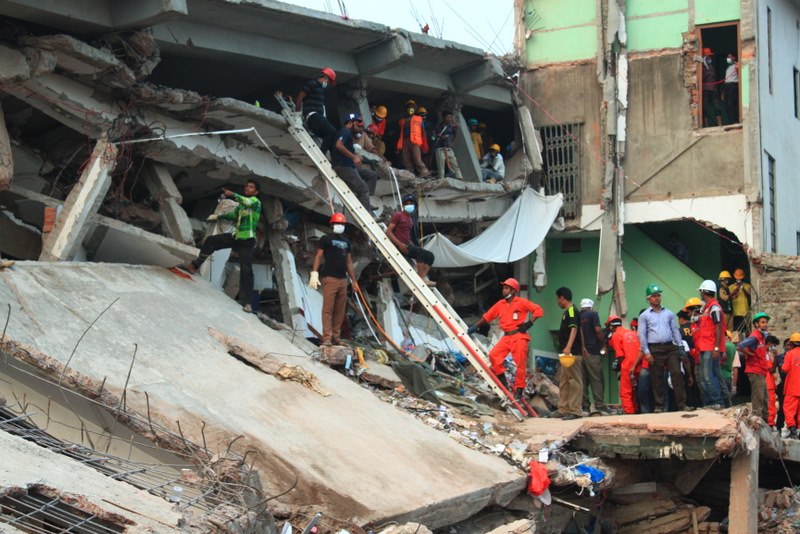The 2013 Rana Plaza factory collapse (also referred to as the Savar building collapse or the Collapse of Rana Plaza) was a structural failure that occurred on 24 April 2013 in the Savar Upazila of Dhaka District, Bangladesh, where an eight-story commercial building called Rana Plaza collapsed. The search for the dead ended on 13 May 2013 with a death toll of 1,134. Approximately 2,500 injured people were rescued from the building. It is considered the deadliest accidental structural failure in modern human history, the deadliest garment-factory disaster in history and the deadliest industrial accident in the history of Bangladesh.
The building contained clothing factories, a bank, apartments and several shops. The shops and the bank on the lower floors were immediately closed after cracks were discovered in the building. The building's owners ignored warnings to avoid using the building after cracks had appeared the day before. Garment workers were ordered to return the following day and the building collapsed during the morning rush-hour.On the morning of 24 April, there was a power outage and diesel generators on the top floor were started. The building collapsed at about 08:57 am BST, leaving only the ground floor intact. The Bangladesh Garment Manufacturers and Exporters Association president confirmed that 3,122 workers were in the building at the time of the collapse. One local resident described the scene as if "an earthquake had struck."
The United Nations' urban search and rescue coordination group – known as the International Search and Rescue Advisory Group, or INSARAG – offered assistance from its members, but the government of Bangladesh rejected this offer. The government made a statement suggesting that the area's local rescue emergency services were well equipped.[29] Before offering assistance to Bangladesh, the UN held consultations to assess the country's ability to mount an effective rescue operation and they reached the conclusion that they lacked that capability. Bangladeshi officials, desiring to take "face-saving" actions and protect national sensibilities, refused to accept the assistance offered to them by the UN. A large portion of the rescue operation consisted of inadequately equipped volunteers, many of whom had no protective clothing and wore sandals. Some buried workers drank their urine to survive the high temperatures, waiting to be saved. Not only was the Bangladeshi government accused of favoring national pride over those buried alive, but many relatives of those trapped in the debris criticized the government for trying to end the rescue mission prematurely.
One of the garment manufacturers' websites indicates that more than half of the victims were women, along with a number of their children who were in nursery facilities within the building. Bangladeshi Home Minister Muhiuddin Khan Alamgir confirmed that fire service personnel, police and military personnel were assisting with the rescue effort. Volunteer rescue workers used bolts of fabric to assist survivors to escape from the building. A national day of mourning was held on 25 April.
On 8 May, army spokesman Mir Rabbi said the army's attempt to recover more bodies from the rubble would continue for at least another week. On 10 May, 17 days after the collapse, a woman named Reshma was found and rescued alive and almost unhurt under the rubble.



